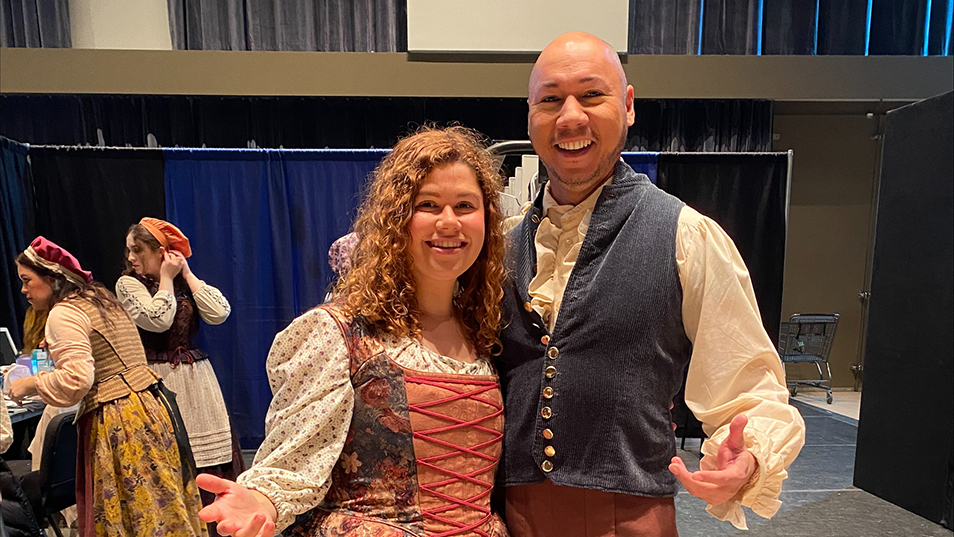Published: February 25, 2020
Instagram vs. Norman Rockwell: Controversies in Communication
*Please note: The March 19 and April 16 events have been postponed until Fall 2020.*
Grandma might not understand the appeal of her granddaughter’s endless selfies, but it doesn’t mean she hasn’t seen the concept before.

The communication department is holding its first Controversies in Communication lecture series on Feb. 27, March 19 and April 16, aimed at older adults and focusing on a variety of topics that will be presented by communication faculty members and students.
“Panics and worries over Instagram and photography in the digital age are overstated,” said Paul Hillier, associate professor of communication, challenging the view that selfies and Instagram are a new concept and just another narcissistic action of Gen Z. “Are many selfies and Instagram photos idealized? Of course. So are Normal Rockwell paintings. Fantasy isn’t always an escape from the world — often, it’s a positive expression of the world we’d like to see.”
Hillier’s lecture, “Centuries of Selfies,” is part of the Department of Communication’s inaugural lecture series, Controversies in Communication. The series is comprised of three lectures by communication faculty and students throughout the spring semester that highlight the relevance of the study of communication and media and living a meaningful life.
The department is partnering with Osher Lifelong Learning Institute at the University of South Florida (OLLI-USF), an organization for adults over the age of 50 that gives individuals the opportunity to explore and learn new things and connect with others in the Tampa area.
“It is the first UT lecture series that I’m aware of that specifically targets older adults in the Tampa Bay area by connecting them with faculty research and student perspectives,” said Christopher Boulton, associate professor of communication, who is helping organize the series.
The UT students involved in the lectures will give interactive tutorials on new media technology, demonstrating how that technology is shaping our communication methods today.
“I hope older adults will come away with the experience of learning how to do something new with their phone along with the sense that, no matter how ‘new’ technology can seem, we’ve often ‘been here before,’” said Boulton. “Remembering these past controversies can help us better predict and shape the future so we avoid the pitfalls of the past.”
Raven King ’20, a communication major, is partnering with Hillier and will be instructing the audience on how to create social media accounts and the perfect selfie. The lecture will be on March 19 in the Board of Trustees room on the ninth floor of the Vaughn Center at 7 p.m.
“With an interest in the representations of black women in media, I decided to participate in this lecture to gain insight on how to lead a lecture, make a connection between digital communication and representations, as well as inform others about centuries of selfies,” said King.
The first lecture of the series, titled “We Are What They Say,” will take place on Feb. 27 at 7 p.m. in the Crescent Club on the ninth floor of the Vaughn Center. It will be presented by Alisha Menzies, assistant professor of communication, and Zane Willard ’20, a double major in economics and communication.
Menzies and Willard will present historic and modern examples of scandals and other events and examine how popular culture and the media shape the communication standards to which we hold celebrities, and thus the standards to which we hold ourselves.
“In essence, when accountability is expected of everyone, is there a hierarchy for communication mistakes?” Menzies asked. “When are public figures and celebrities granted forgiveness for their communication mishaps?”
The last lecture of the series, “Are Stars Born or Made?,” will be given on April 16 by Landon Palmer, professor of instruction I, communication, and Mallary Weinzs ’20, an advertising and public relations major.
“Are Stars Born or Made?” will explore the practice of hiring music stars for films and the desire to see singers on the big screen — which dates back to the very first sound films in the 1920s — and how this complicates our views of stardom across contexts like music and film.
“[Movies that feature popular musicians] reveal the ways that Hollywood thinks people navigate their preferences across popular culture between different media,” said Palmer. “Basically, when a movie casts a singer, or when a singer lobbies to star in a film, this gives us a snapshot of the media industries at a particular point in time.”
“Are Stars Born or Made?” will take place in room 219 in the Vaughn Center.
The Controversies in Communication series is free to UT students, faculty and staff. Tickets are $10 for OLLI-USF members. Each lecture will last about an hour and be followed with refreshments and conversation.
Story by Mallory Culhane '21, journalism major



